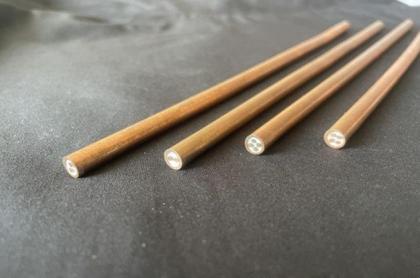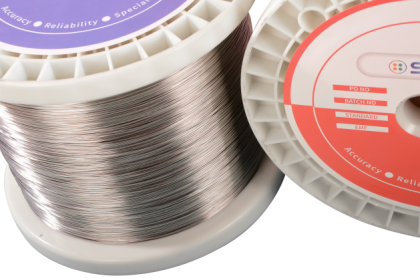The thermocouple measurment errors 's reasons
(1) .Insertion Depth
When the thermocouple is inserted into the measured object, the heat flow will be generated along the sensor body. When the ambient temperature is low, there will be heat loss, which will cause the temperature of the thermocouple and the measured object to be inconsistent, resulting in measurement errors. The error caused by heat conduction is related to the insertion depth and the insertion depth is related to the material of the protective tube. The insertion depth for metal protection tube should be deeper (about 15-20 times the diameter) because of its good thermal conductivity; the insertion depth for ceramic material is can be shallower(about 10-15 times the diameter). For engineering temperature measurement, the insertion depth is also related to whether the measurement object is static or flowing. For example, the measurement of the temperature of flowing liquid or high-speed air flow will not be subject to the above restrictions,the insertion depth can be shallower.
(2) .Response Time
The basic principle of contact temperature measurement is that the temperature measuring element should reach thermal equilibrium with the measured object. Therefore, it is necessary to maintain a certain period of time to make the two reach thermal equilibrium when measuring the temperature. The holding time is related to the thermal response time of the temperature measuring element, and the thermal response time mainly depends on the structure of the sensor and the measurement conditions. For gaseous, especially static gases, it should be maintained for at least 30 minutes to reach equilibrium; for liquids, the fastest time should be more than 5 minutes.
For the measured temperature field with constantly changing temperature, especially the instantaneous change process, the response time of the sensor is required to be at the millisecond level. Otherwise the ordinary temperature sensor will not only lag because it cannot keep up with the speed change of the measured object, but also measurement errors occur due to failure to reach thermal equilibrium. Therefore, it is best to choose a sensor with a fast response speed. For thermocouple, in addition to the influence of the protective tube, the diameter of the thermocouple’s measuring end is also the main factor, the smaller the diameter of the measuring end and conductor wire, the shorter the thermal response time.
(3) .Heat Radiation
The thermocouple inserted into the furnace is heated by the heat radiation emitted by the high temperature object. If the gas in the furnace is transparent and the temperature difference between the thermocouple and the furnace wall is large, there will be a temperature measurement error due to the thermal radiation between the thermocouple and the furnace wall. Therefore, in order to reduce the thermal radiation error, the temperature of the furnace wall should be as close as possible to the thermocouple temperature. In addition, the installation position of the thermocouple should be pay attention.
(4) .Increased Thermal Impedance
For thermocouple used at high temperatures, if the measured medium is gaseous, the dust deposited on the surface of the protective tube will melt on the surface, increasing the thermal resistance of the protective tube; if the measured medium is a melt, the presence of slag deposits not only increases the response time of the thermocouple, but also lowers the measured temperature. For example, in the smelting high-temperature furnace, not only the thermocouple for continuous temperature measurement are installed, but also the consumable thermocouple temperature measurement device is used to calibrate the accuracy of the thermocouple in time.
(5) None uniform of thermocouple bare wire
A. The thermocouple material itself is not uniform
Thermocouple is only inserted into the verification furnace at a depth of 300mm according to regulations during metrological verification,the verification results of each thermocouple can only reflect or mainly reflect the thermoelectric effect of the 300mm long from the measuring end. When the length of the thermocouple is long, most of the thermocouple wires are in the high-temperature zone. Thermocouple alloy is not uniform, especially the base metal thermocouple wire, which has poor homogeneity and is in a temperature field with a temperature gradient, so its local part will generate thermal electromotive force, which is called parasitic potential. Errors caused by parasitic potentials are called inhomogeneity errors.
B. None uniform of thermocouple bare wire after use
Thermocouple in use is often bent to cause distortion of the thermocouple, which will cause the thermocouple to lose its homogeneity. Moreover, the long-term high temperature of the thermocouple in use will also cause the change of thermoelectromotive force due to the deterioration of the couple wire. For example: thermocouple inserted into an industrial furnace will deteriorate along the length of the thermcouple wire, and the deterioration will increase as the temperature increases. When the degraded part is in a temperature field with a temperature gradient, the parasitic electromotive force will also be superimposed on the total thermal electromotive force, resulting in measurement errors.
The failure rate of thermocouple increases with the increase of the length, and the error caused by the additional electromotive force generated by the inhomogeneity of the thermocouple bare wire depends on the degree of inhomogeneity and the size of the temperature gradient.
(6) .Influence of atmosphere
A. For nickel-chromium thermocouple alloy, if the gas contains oxygen, then chromium with a high affinity for oxygen will undergo selective oxidation, which is the unique grain boundary oxidation of nickel-chromium alloy. If you observe the oxide layer on the outer surface with a microscope, you can see green precipitates, this phenomenon is usually called "green etching". Especially when the temperature is in the range of 800-1050 °C, the positive electrode of the K-type thermocouple is more prone to selective oxidation.
Thermocouple life can be extended if the gas is pure and the system does not contain oxygen. However, if there is an oxide layer on the surface of the thermocouple bare wire, it can still provide enough oxygen for the selective oxidation of chromium. Therefore, when used in a non-oxidizing atmosphere, clean and polished thermocouple wire should be used, and at the same time, Oxygen inert gas should be avoided as much as possible.
B. In order to prevent or slow down the deterioration of K-type thermocouple, we need to choose a metal with a stronger affinity for oxygen than chromium as a getter and seal it in the protective tube preventing selective oxidation of chromium.
The stability of thermocouple varies with operating temperature and atmosphere. The maximum operating temperature of the same sensor such as K-type thermocouple also varies due to different diameters. K-type thermocouple with the same diameter also has great differences in stability due to different structures.
Thermocouple Deterioration and Service Life
(1) .Deterioration
The service life of the thermocouple is related to its deterioration. The thermocouple deterioration means that after the thermocouple is used, it will age and deteriorate. For thermocouple made of metal or alloy, the internal crystal grains will gradually grow up at high temperature. At the same time, the alloy contains a small amount of impurities, and its position or shape also changes. Moreover, it also reacts to reducing or oxidizing gases in the surrounding environment.
(2) .Service Life
The life of the protection tube also determines the life of the thermocouple. Since Mineral insulated thermocouple is protected by a casing and isolated from the external environment, the material of the casing has a great influence on the life of the MI thermocouple. Thermocouple wire and protective tube must be selected according to the application. When the material is selected, its life increases with the increase of the diameter of the thermocouple.
The acutal service life of thermocouple must be collect and accumulate date in actual use for a long time, it is possible to show more accurate reults. Get more details from www.super-instrument.com.






 IPv6 network supported
IPv6 network supported